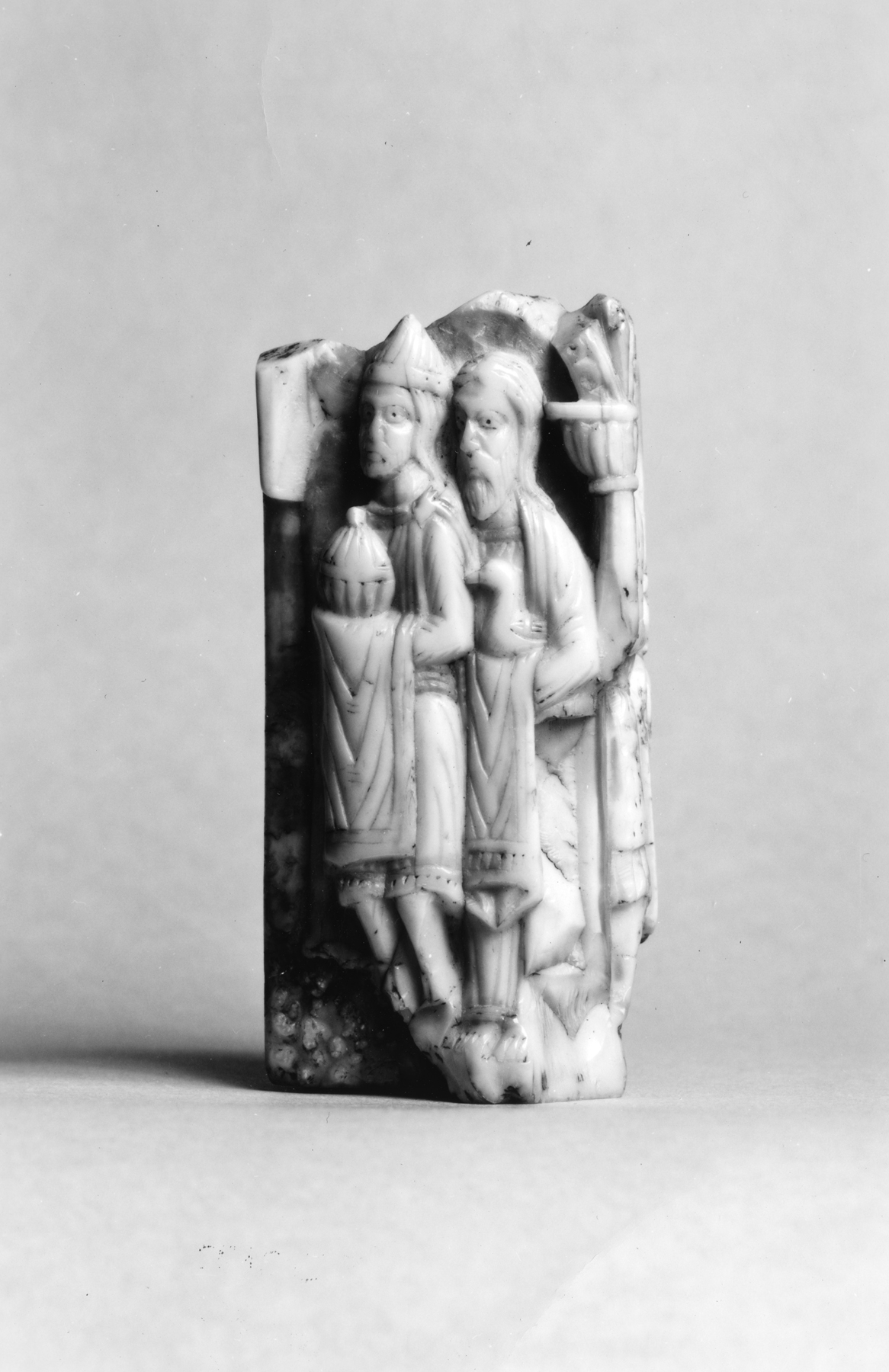Fragment with Figures from Two Scenes
(Medieval Europe )
Probably the corner of a portable altar, this piece is curious because it combines two scenes in one. On one side are two figures under an arch; a king bearing a gift in what must have been the Adoration of the Magi; and, behind him, Joseph carrying a dove from the Presentation in the Temple. Four other examples of Cologne work in ivory of the same period combine the Adoration with the Presentation.
On the second side, under a similar arch, is a soldier in a conical helmet and chain mail with sword and shield, who may have been a soldier of Herod in the Massacre of the Innocents.
The soldier here does not have to be part of a larger scene; a number of Cologne works have soldiers or military saints, like Gereon, at the corners. The Walters fragment may be part of the destroyed tower reliquary of the three kings from the Hällesche Heiltum of Albrecht of Brandenburg.
Provenance
Provenance (from the French provenir, 'to come from/forth') is the chronology of the ownership, custody, or location of a historical object. Learn more about provenance at the Walters.
Hällesche Heiltum, ca. 1541 (?); Henry Walters, Baltimore, 1926, by purchase; Walters Art Museum, 1931, by bequest.
Exhibitions
| 2002-2005 | Realms of Faith: Medieval and Byzantine Art from the Walters Art Museum. Frist Center for the Visual Arts, Nashville. |
| 2001-2002 | Realms of Faith: Medieval and Byzantine Art from the Walters Art Museum. Frist Center for the Visual Arts, Nashville. |
Geographies
Germany, Cologne (Place of Origin)
Measurements
H: 3 3/16 × W: 1 3/8 × D: 1 3/16 in. (8.1 × 3.5 × 3 cm)
Credit Line
Acquired by Henry Walters, 1926
Location in Museum
Not on view
Accession Number
In libraries, galleries, museums, and archives, an accession number is a unique identifier assigned to each object in the collection.
In libraries, galleries, museums, and archives, an accession number is a unique identifier assigned to each object in the collection.
71.144


